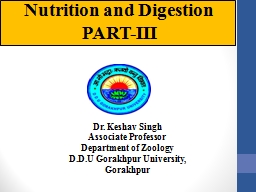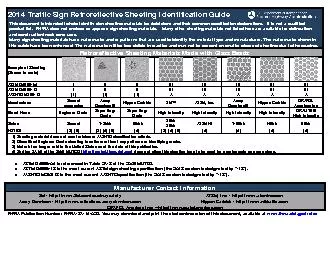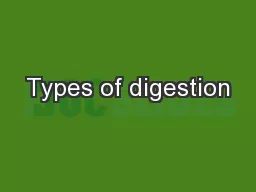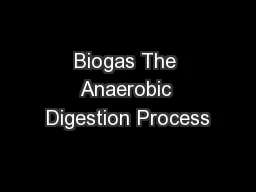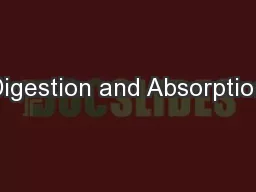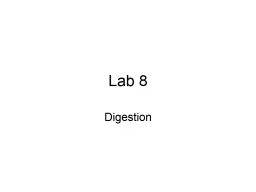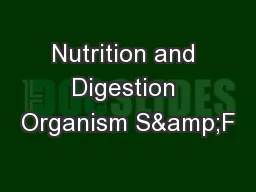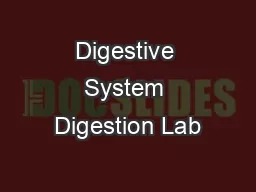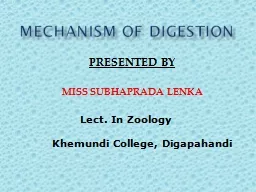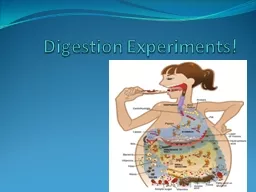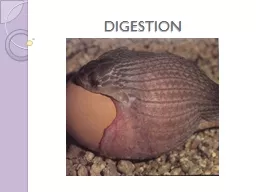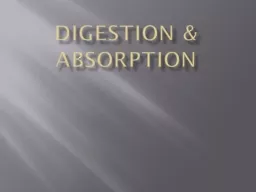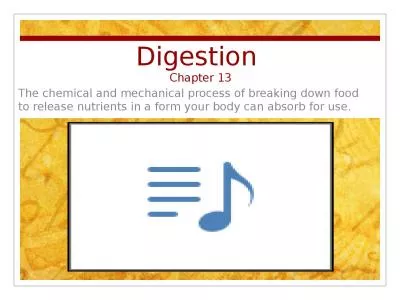PPT-Nutrition and Digestion PART-III
Author : norah | Published Date : 2023-11-24
Dr Keshav Singh Associate Professor Department of Zoology DDU Gorakhpur University Gorakhpur 1 The caecum This is the first part of the colon It is a dilated
Presentation Embed Code
Download Presentation
Download Presentation The PPT/PDF document "Nutrition and Digestion PART-III" is the property of its rightful owner. Permission is granted to download and print the materials on this website for personal, non-commercial use only, and to display it on your personal computer provided you do not modify the materials and that you retain all copyright notices contained in the materials. By downloading content from our website, you accept the terms of this agreement.
Nutrition and Digestion PART-III: Transcript
Dr Keshav Singh Associate Professor Department of Zoology DDU Gorakhpur University Gorakhpur 1 The caecum This is the first part of the colon It is a dilated region which has a blind end inferiorly and is continuous with the ascending colon superiorly. MICROWAVE DIGESTION BOMBS pages 34 and 811 For treating either inorganic or organic samples with strong acids or alkalis under heat and pressure in metalfree vessels using microwave energy for rapid dissolution or digestion with complete containment Manufacturer See note A Dennison Dr. . Jagdish. . Kaur. P.G.G.Govt. . College, Sector 11. CHANDIGARH. Intracellular . digestion. Intracellular digestion . Simple type of digestion which occurs inside the food vacuoles in the cytoplasm of the cell.. Andrew Gabriel and . Tidasate. Success. What exactly is biogas (composition)?. What is the biological process by which it is created?. What type of substance is used in this process?. What are the three stages of the biogas production process?. Water, Electrolytes . and. . Carbohydrates. Gregory J. Bagby, PhD. Rozas Professor of Physiology. CSRB . Rm. 3B9/310. gbagby@lsuhsc.edu. 504-568-6188. GI PHYSIOLOGY. Text for Lectures . Raff and Levitzky. Histology. Parotid gland, esophagus, stomach, duodenum, jejunum, ileum, colon, liver, pancreas. Alimentary canal histological layers. . Models of the digestive system. PhysioEx: Chemical and Physical Processes of Digestion. Tony . Serino. , Ph.D.. Biology 201. Misericordia. University. Digestion. The reduction through mechanical and chemical means (hydrolysis) of complex food substances into simple monomers and their absorption into the internal environment.. . We are going to use household items to model the digestive system.. . Digestion Lab. Substances in food that provide raw materials and energy the body needs to live. Our digestive system turns the chemical energy in these nutrients into energy we can use. MISS SUBHAPRADA LENKA. Lect. In Zoology . . . Khemundi. College, . Digapahandi. . DIGESTION. Digestion is a process by which the complex & insoluble form of food material converted into simple & soluble form by physical & chemical processes. . Ovriona. , Taylor, . Nydra. Problem: To determine . h. ow long it takes to digest the suggested serving size of butter as compared to an excess unhealthy amount (double serving size).. Results:. Weight. The process in which food is . broken down . into smaller . molecules. that can be . absorbed. into the body and are . usable by cells. .. Five Main Digestive Processes. Ingestion. – Eat; . . Intaking. BIOMEDICAL IMPORTANCE. Besides water, the diet must provide metabolic fuels (mainly carbohydrates and lipids), protein (for growth and turnover of tissue proteins), fiber (for roughage), minerals (elements with specific metabolic functions), and vitamins and essential fatty acids (organic compounds needed in small amounts for essential metabolic and physiologic functions). . 267 The digested end products are absorbed into the body through the epithelial liningof the intestinal villi. The undigested food (faeces) enters into the caecum of the largeevents the back flow of t The Digestive System (3:38). http://www.youtube.com/watch?v=P5lyQUtq1KQ. Absorption. Food is broken down in the digestive tract or . ALIMENTARY CANAL.. Nutrients get from the digestive . tract into the transportation system that carries them to cells throughout the body.
Download Document
Here is the link to download the presentation.
"Nutrition and Digestion PART-III"The content belongs to its owner. You may download and print it for personal use, without modification, and keep all copyright notices. By downloading, you agree to these terms.
Related Documents

